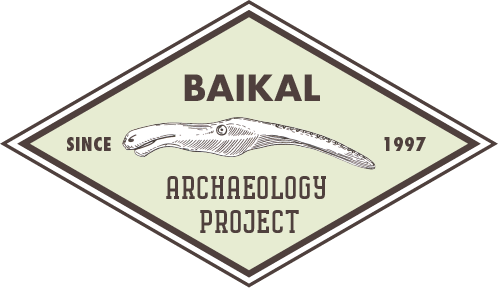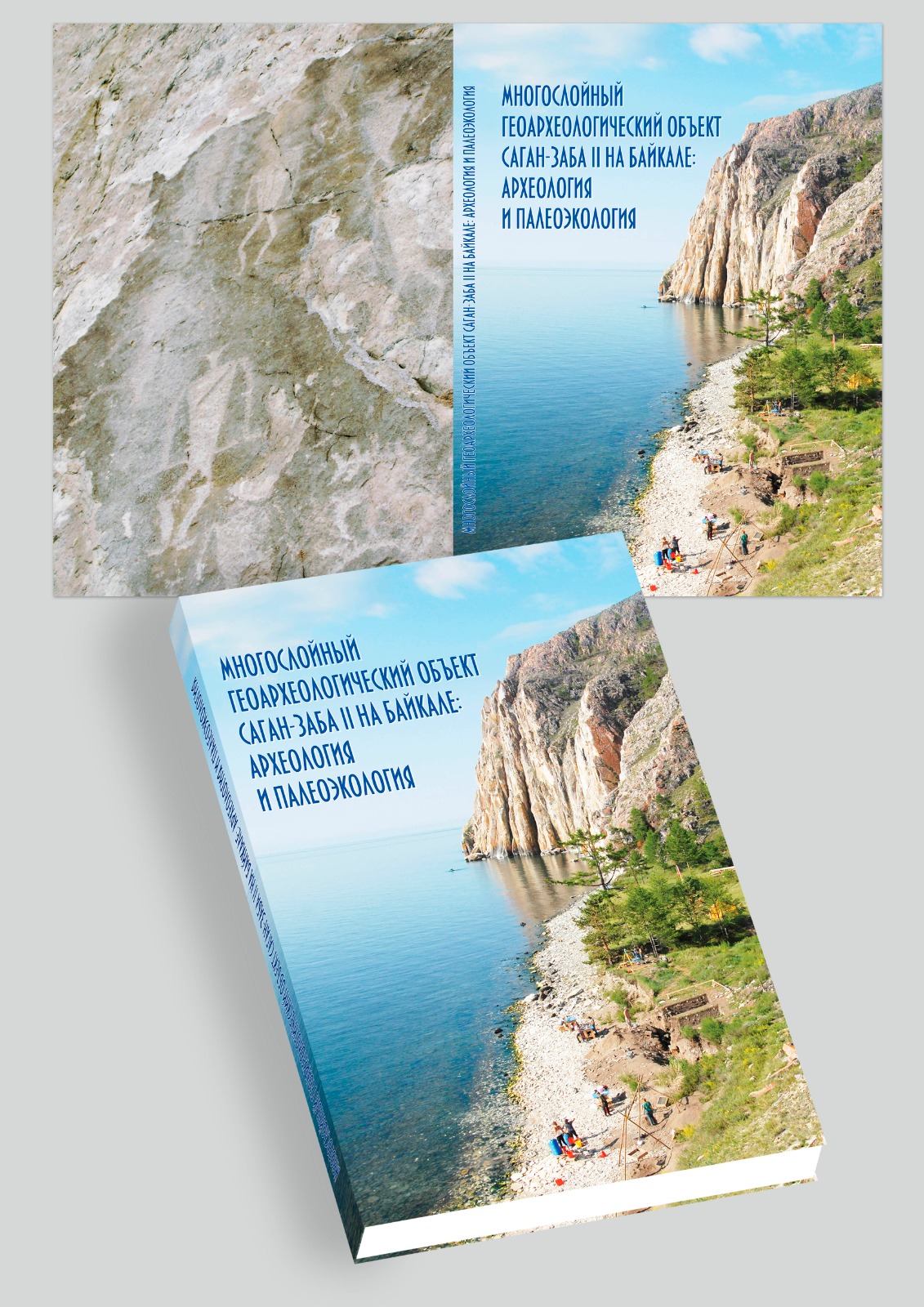Congratulations to Drs. Alexei G. Novikov, Galina A. Vorobieva, Olga I. Goriunova and Dr. Andrzej W. Weber on the recent publication of their BAP Monograph on Sagan-Zaba II!
Title: Multilayer Geoarchaeology object Sagan-Zaba II on Lake Baikal: Archaeology and Paleoecology
Authors: Alexei G. Novikov, Galina A. Vorobieva, Olga I. Goriunova and Dr. Andrzej W. Weber
Summary: The purpose of this monograph is to disseminate the new archaeological materials from the Sagan-Zaba II camp site, located in a cove of the same name on the west coast of Lake Baikal, about 12 km SW of the mouth of the Anga River and 154 km NE of the Irkutsk city. The three excavation seasons (2006–2008) carried out at Sagan-Zaba by the Russian–Canadian archaeological expedition provided new knowledge regarding the complex cultural processes taking place within the Cis-Baikal region during the Holocene as well as new data to re-evaluate and redefine the chronology established earlier based on only very few radiocarbon dates. The monograph employs a range of scientific methods such as radiocarbon dating, geoarchaeology, zooarchaeology as well as the analysis of the excavated collection of artefacts.
The materials from Sagan-Zaba II allow also a fresh and comprehensive examination of the poorly understood formation processes of alluvial-proluvial fans (конусы выноса) within the very diverse morphology of the Baikal coast, its geomorphology shaped mainly by tectonic events. Much attention was paid to examination of prehistoric life under the conditions of such rather dangerous ecological settings.
At the Sagan-Zaba cove the usual difficulties experienced by prehistoric groups were exacerbated occasionally by catastrophic geological events such as earthquakes and landslides of proluvial debris caused by torrential rains. Based on the general geomorphological setting within the Baikal rift zone and the empirical evidence of seismotectonic events recorded at the Sagan-Zaba alluvial-proluvial fan, earthquakes of substantial force were not uncommon. Among the natural catastrophic events, earthquakes probably had the most serious consequences in the form of rapid activation of rockfalls and landslides.
The importance of catastrophic pluvial erosional processes at Sagan-Zaba is related to two factors: (1) geomorphology, that is the substantial depth of the cove combined with the step-wise shape of its thalweg and the steepness of the surrounding slopes; and (2) vegetation, that is the lack of forest cover on the cove’s edges and the adjacent parts of the Ol’khon plateau to provide protection against erosion. Particularly dangerous, because of its unpredictability, very likely were the powerful proluvial landslides with catastrophic consequences for the daily life of prehistoric people and safety at their living camps. Landslide events, of various magnitude, were likely quite common during the Holocene leaving on the surface of alluvial-proluvial fans considerable amounts of large angular cobbles. Obviously, these processes had negative consequences for both the natural environment and the life of past human groups.
The sediments exposed by archaeological trenches, placed at different parts of the Sagan-Zaba alluvial-proluvial fan, demonstrate that rubble of the largest size was transported through the channels of seasonal streams moving it towards Baikal and, partly, onto the adjacent beaches, while rubble of smaller, although still variable size was deposited on the surface of the fan. The peripheries of the fan, where the Sagan-Zaba II camp site (Points 1 and 2) is located, the weaker proluvial events deposited small rubble, grus, and sand, thus burying the paleosoils with evidence of human occupation without causing much erosion. The intervals between such catastrophic events were long enough for deluvial sedimentation and soil formation processes to develop. Quite possibly, prehistoric groups deliberately located their camps in places of the lowest risk and exposure to catastrophic events where living conditions were more inviting and the land surface was levelled off by deluvial processes and covered by grasses.
The archaeological fieldwork confirmed that the most suitable conditions for human occupation and preservation of the accumulated archaeological deposits in the Sagan-Zaba cove existed at the SW periphery of the alluvial-proluvial fan (Point 3) and at its NE part (Point 2), in both cases close to the beach. From the archaeological perspective Point 2, with its 11 cultural layers, is more informative than Point 3. Sagan-Zaba II is the first camp site within the entire Cis-Baikal where several stratigraphic units of relatively fine resolution dating from the Neolithic to the Iron Age have been identified. The multidisciplinary examination of the excavated materials allowed identification and characterization of a number of culture-historical periods from Late Mesolithic to Iron Age as well as reconstruction of environmental and climatic conditions and events during the times of interest.
This work demonstrated that the sedimentation and soil formation processes are quite sensitive indicators of the changing paleoclimatic conditions. The investigated area is located withing a larger territory of low annual atmospheric precipitation which makes soils to react in a sensitive manner to interannual variation. Taking into considerations the fluctuations in annual precipitation in the Ol’lkhon micro-region during the Holocene, it is more appropriate to talk not about comprehensive changes in vegetation, but rather about expansion or retreat of bare, steppe, and forested spaces. The results of multidisciplinary studies show that the period from Late Mesolithic to Neolithic (cultural layers VII–IV) was characterized by the most favorable combination of warmth and precipitation, which together facilitated expansion of meadow vegetation in the Sagan-Zaba cove. Evidence of some climatic cooling and aridization has been documented in sediments separating the Late Neolithic and Early Bronze Age cultural layers (IV and III-lower, respectively). Evidence for moderately wet and cool phase was documented for the period from the Late Bronze to Early Iron Age. Continued aridization, resulting in expansion of the dry steppe vegetation, was observed at the time when the remaining Iron Age layers formed (Layer III-upper to Layer I). Regardless of the fluctuating temperature and precipitation, typical of the Ol’khon micro-region, this did not lead to any cardinal restructuring of the area’s vegetation landscape and, from the perspective of the needs of prehistoric human groups, probably did not result in any crisis-causing environmental conditions.
Moreover, the Sagan-Zaba II camp site is the first archaeological locality, not only on the coast of Lake Baikal but also within the entire Cis-Baikal, for which a large series of AMS radiocarbon dates have been obtained essentially for all archaeological layers: 132 dates in total, of which 106 are on skeletal remains of terrestrial herbivores. Such large dataset, of course, allowed substantial improvements and fine-tuning of the chronological parameters (i.e., durations and boundaries) of all culture-historical units. All intervals in the table below are based on dates calibrated in Calib Rev 8.1.0 using the IntCal20 dataset.
| Period | Layer | Interval cal. BP * | Dates |
| Late Mesolithic | Layer VII | ~9020–8650 | 14 |
| Early Neolithic early component | Layer VI (all units) | ~8173–7870 | 19 |
| Early Neolithic late component | Layer V-lower | ~7570–6960 | 14 |
| Middle Neolithic | Layer V-upper | ~6840–6300 | 11 |
| Late Neolithic | Layer IV | ~5590–4850 | 26 |
| Bronze Age (Developed and Late) | Layer III-lower | ~4500–2000 | 13 |
| Early Iron Age | Layer III-upper | ~1980–1530 | 9 |
| Late Iron Age | Layers II and I | ~1240–940 | 8 & 13 |
* 95.4% confidence level.
These radiocarbon intervals are fully compatible with the stratigraphic data and results of relative dating based on correlation and comparison with archaeological assemblages from other multi-layered camp sites within the Ol’khon micro-region and the entire Cis-Baikal.
Тhe very long chronological interval of human occupation at Sagan-Zaba allows tracking the temporal changes in subsistence activities in this particular area. Based on the horizontal distribution data as well as the faunal and archaeological materials it was possible to reconstruct the material culture and subsistence activities of the human groups inhabiting the Sagan-Zaba cove at different times.
It was established that, essentially during all periods, the bulk of the archaeological materials formed relatively small clusters typically associated with fire pits or hearths. The structure of these clusters was not particularly differentiated and consisted of domestic refuse including faunal remains and objects made of a variety of materials. The excavated levels didn’t reveal any assemblages, such as production areas of specific objects, fire pits or hearths of long-term use, which could be associated with dwellings. All this suggests that during the entire Holocene prehistory, the Sagan-Zaba cove was used as a locality for short-term camps, a notion supported further by the rather limited assortment of tools documented at all cultural layers.
The animal species structure and the quantities of faunal remains indicate that Sagan-Zaba was used mainly for food procurement with much continuity in terms of procured species. The main subsistence activity, peaking during the Neolithic, was hunting for the seal and, to a lesser degree for terrestrial game (mainly roe deer, red deer, rarely moose and boar), and also fishing. The Iron Age layers (Late Holocene) show a decrease in game hunting as domesticated animals, such as sheep/goat, cattle, and horse, make their first appearance in the area.
Fishing, apparently, was a supplementary subsistence activity. Fish bones were found in all cultural layers beginning from the Late Mesolithic but they are relatively more abundant in Bronze Age (Layer III-lower) and Early Iron Age (Layer III-upper) strata. Thus, it seems that fishing was not an unimportant subsistence activity during the Late Holocene at this locality.
Archaeological finds provide some insights regarding fishing techniques used at different times. During the Late Mesolithic (Layer VII), fish were probably procured with the help of harpoons and nets, the use of the latter confirmed by the finds of stone sinkers. The use of nets during the Late Mesolithic was also documented at a few camp sites located in the Mukhor Bay in the Little Sea (e.g., Ulan-Khada, Sagan-Nuge). The Neolithic assemblages (Middle Holocene, Layers VI, V-lower, V-upper, and IV) show both higher quantities and greater variation of fishing implements, which now include shanks and barbs of composite fishhooks, lithic fish lures, and bone harpoon points. This variation suggests a range of fishing techniques employed by these groups including line fishing in addition to the older techniques of harpoons and nets. While the Late Holocene layers contained more fish bones than the older strata, fishing implements are essentially absent. It is possible that fishing employed techniques that left no direct archaeological evidence (i.e., other than the fish bones) such as, perhaps, seines, rafting nets, etc. (невод, сплавные сети и др.).
Thus, the prehistoric groups visiting the Sagan-Zaba over the entire Holocene made use of essentially all food resources available at this locality.
It has been demonstrated that prehistoric occupation at Sagan-Zaba was seasonal and limited to spring–summer. At this time Baikal seals approach the beaches and form large colonies which are a relatively easy hunting object. Similar hunting camps, focusing primarily on seal procurement, were documented at a number of other locations on the west coast of the open Baikal such as Tyshkine II and III (Ol’khon Island), Bugul’deika II, and others.
Beginning from the Bronze Age, the Sagan-Zaba cove was visited not only for seasonal procurement of food but also for ritual activities, perhaps, related to hunting. This is suggested, first, by the rock art dating to the period from Bronze Age to historical times and, second, by the presence of ritual features documented higher up at the edge of the plateau before the descent towards the Sagan-Zaba cove. Still today, next to the high wall with rock art it is not uncommon to find votive offerings such as copper coins, used in the past, as well as match boxes, cigarettes, and candies—their contemporary versions.
In sum, the archaeological sites (i.e., camps, ritual features, rock art) identified in and around the Sagan-Zaba cove need to be considered as elements of one archaeological locality characterizing the area’s cultural heritage from Mesolithic to historical times.
Congratulations to all the authors!


